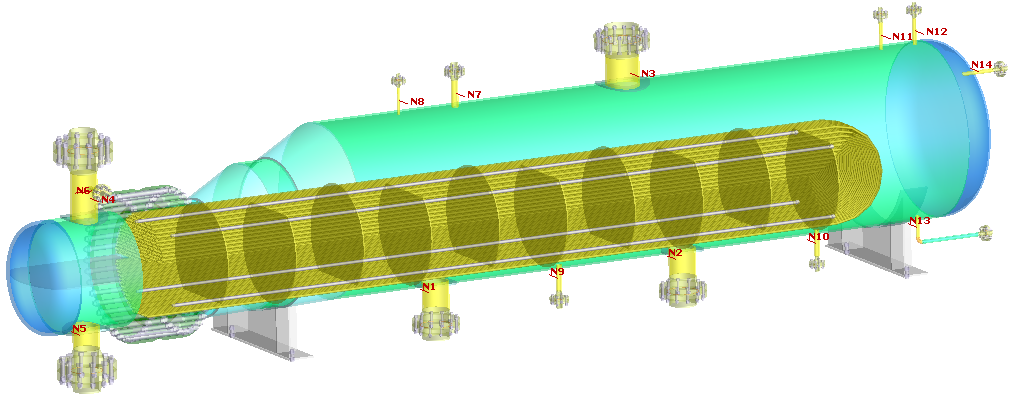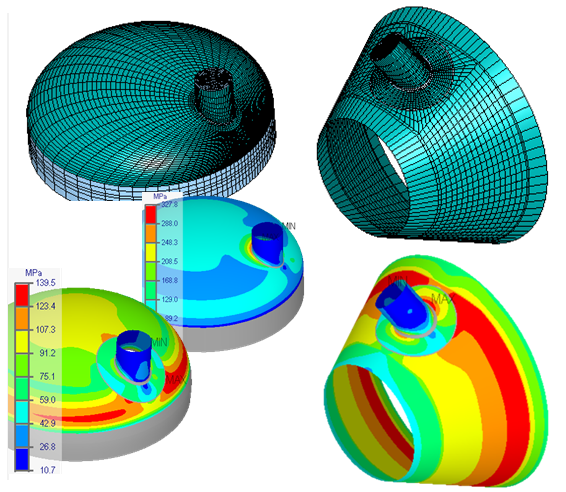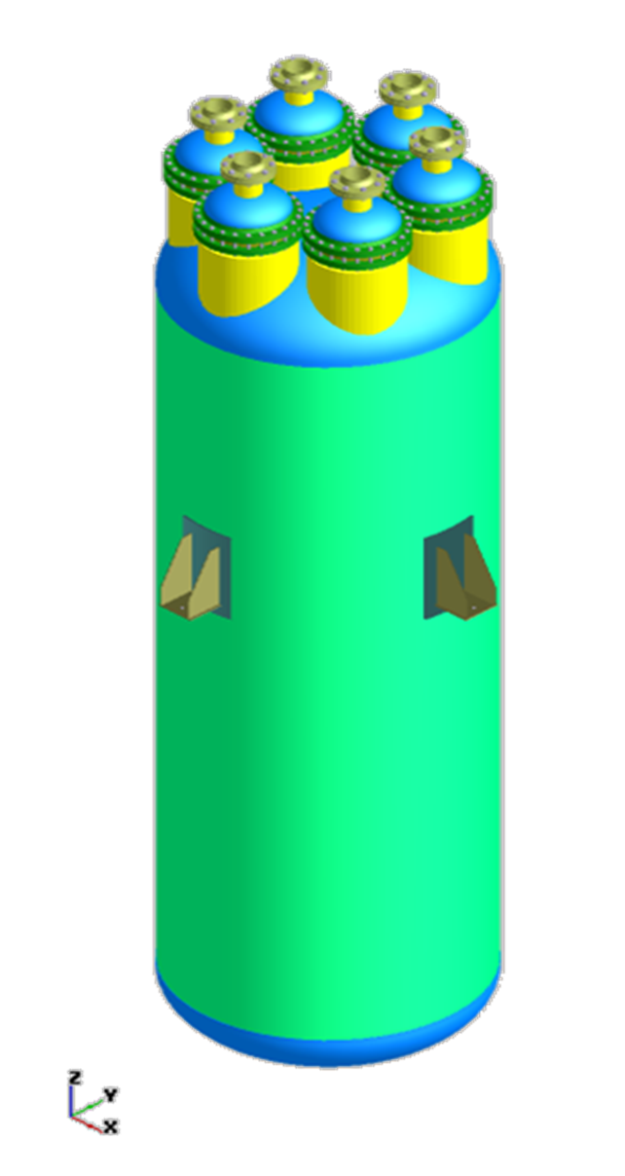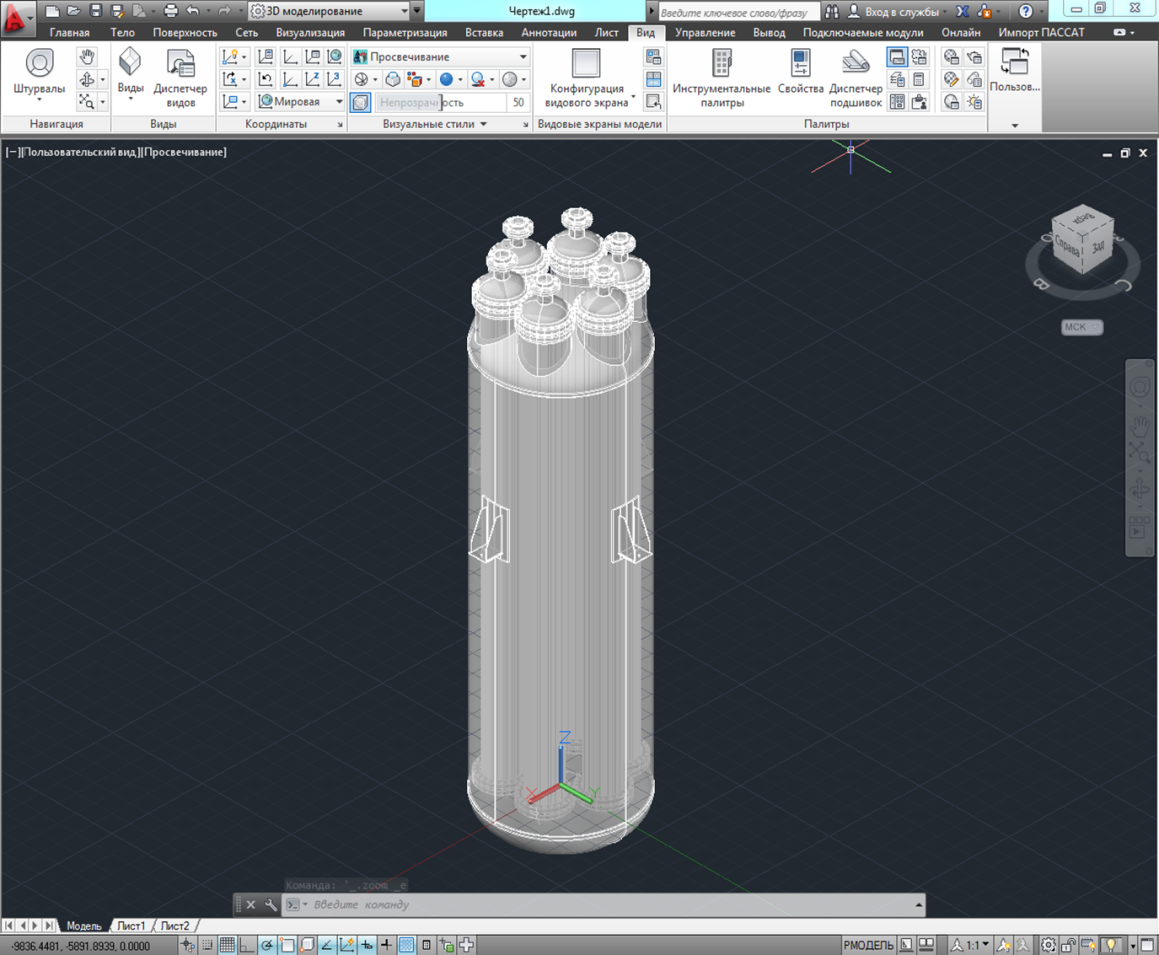Overview
PASS/EQUIP software provides pressure vessel strength and stability analysis for horizontal and vertical vessels, columns, storage tanks, as well as shell-and-tube, and air cooled heat exchangers under static and seismic loads in order to evaluate bearing strength in operation, test, and assembly states. The software can be used for designing, revamping and testing of vessels, as well as for code compliance certification calculations for power, oil-refining, chemical, petrochemical, natural gas, petroleum, and other related industries. PASS/EQUIP helps to increase reliability and operational safety of equipment for various applications, to improve coordination of the project with regulatory authorities, and to reduce costs and time.

PASS/EQUIP FEM bundle additionally provides stress and flexibility FEM analysis of arbitrary vessel nozzles, including allowable loads calculation.

PASS/EQUIP combines sophisticated calculation capabilities and code compliance analysis with ease-of-use, delivering pressure vessels stress and stability simulation tool to even entry level engineers and designers. Detailed calculation reports produced by the program contain comprehensive information (including all equations, intermediate results, plots of forces and moments) and are ready for delivery to any authorities or equipment certification bodies.
Equipment designers and process and piping engineers of more than 500 EPC and vessel manufacturing companies in Belarus, China, Czech Republic, Estonia, France, Germany, India, Italy, Japan, Kazakhstan, Latvia, Poland, Russia, South Korea, Spain, Ukraine, Uzbekistan and USA now use the software every day for design of different types of vessels, columns, tanks, and heat exchangers.
Due to the large number of users and feedback from specialists of different industries, PASS/EQUIP continues to steadily evolve to meet modern demands. PASS/EQUIP is being permanently verified and cross-tested both vs similar programs and Example Problem Manuals ASME PTB-3-2013 and ASME PTB-4-2012.
PASS/EQUIP has a modern intuitive user interface, detailed documentation and help system, and provides the ultimate in usability, allowing users to focus on equipment design. A user defines an equipment type, geometrical adjectives, material of vessel components, type and allocation of supports, test type, and loading rates. The vast databases for vessel elements and materials are delivered with the program and can be updated by the user.
3D graphic view of equipment geometry allows editing color of separate elements or of the whole model, with internal elements views. Powerful 3D modeling capabilities also support export to various CAD formats, so users can continue working on vessel design in their favorite CAD systems.


PASS/EQUIP does not require a special training and can be used by any mechanical engineer. New users can get pressure vessel analysis results in days rather than months!
Our specialists provide timely technical support.
User Interface
PASS/EQUIP has a modern, clear and intuitive user interface. Designer uses 3D object-oriented analysis model of equipment assembled from different elements. The objects that make up the equipment 3D model are:
- Cylindrical shells (smooth and reinforced with stiffening rings);
- Conical transitions;
- Welded bottoms and detachable bottoms and covers (spherical, elliptical, torispherical,
- conical, flat (including with stiffeners), spherical non-flanged);
- Flange connections;
- Places of connections of fittings;
- Saddle supports and cylindrical shells in the places of their support in the case of horizontal vessels and apparatus;
- Cylindrical shells, conical elements and convex bottoms at the points of attachment of the bearing lugs, lifting trunnions, at the points of attachment of metal structures;
- Reinforcement of holes; Bends;
- Tie-in (choke) in shells and convex bottoms;
- Elliptical partitions;
- Ellipsoidal transitions;
- Elements of column-type apparatus against wind and seismic effects, including those installed on a pedestal;
- Supporting shells of column-type apparatus;
- Tube sheets, casing, pipes, compensator, expander, floating head of heat exchangers;
- Chambers of heat exchangers for air cooling;
- Elements of vessels and apparatus with jackets (cylindrical, U-shaped, partially covered by jackets, with coil and register channels, with longitudinal channels);
- Elements of vessels and high-pressure apparatus (shells, bottoms, flanges, covers, tie-ins);
- Elements of vertical tanks;
- Viewing windows, bosses.
System Requirements
| Windows 7/8/10+ | ||
| x86-64 architecture processor | ||
| 1GB of RAM | ||
| Video card with OpenGL 2.0+ support and 1GB+ of RAM | ||
| Display resolution at least 1024x768, recommended 1280x1024 | ||
